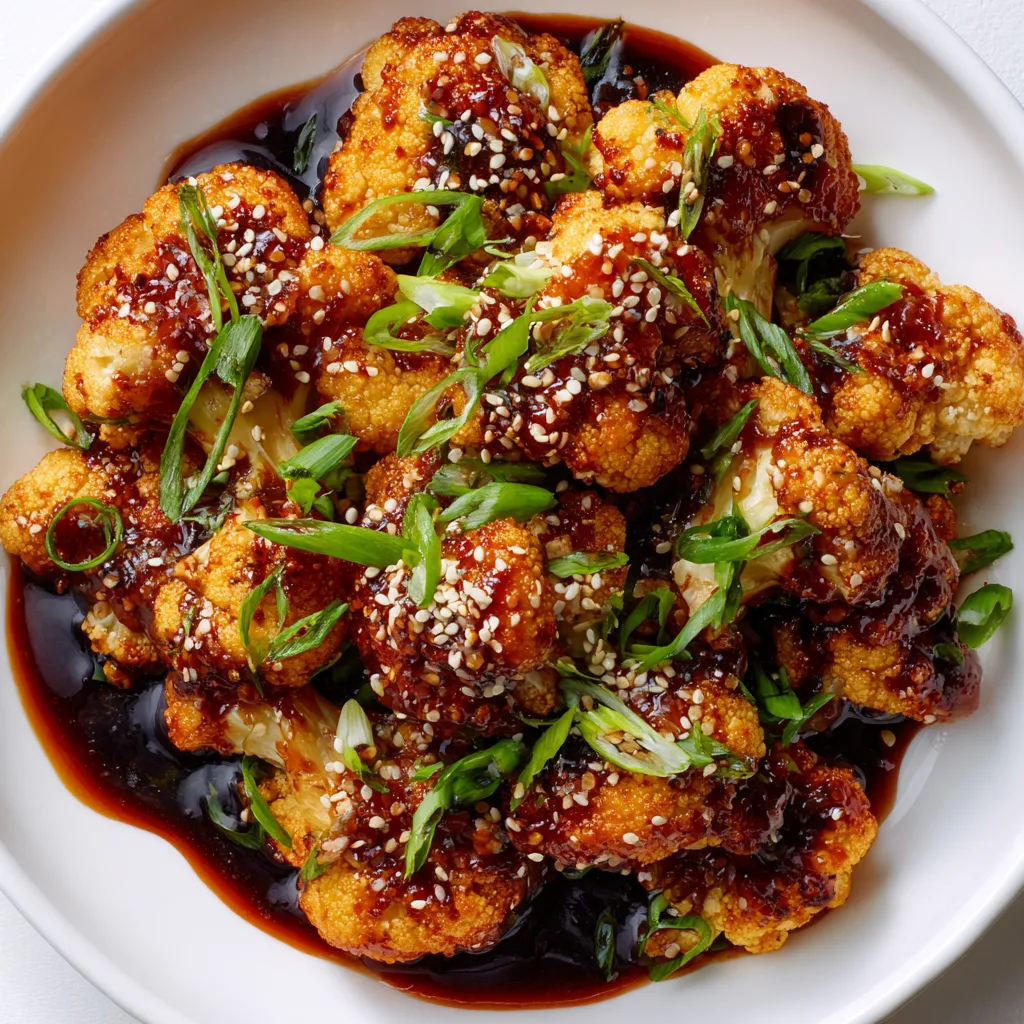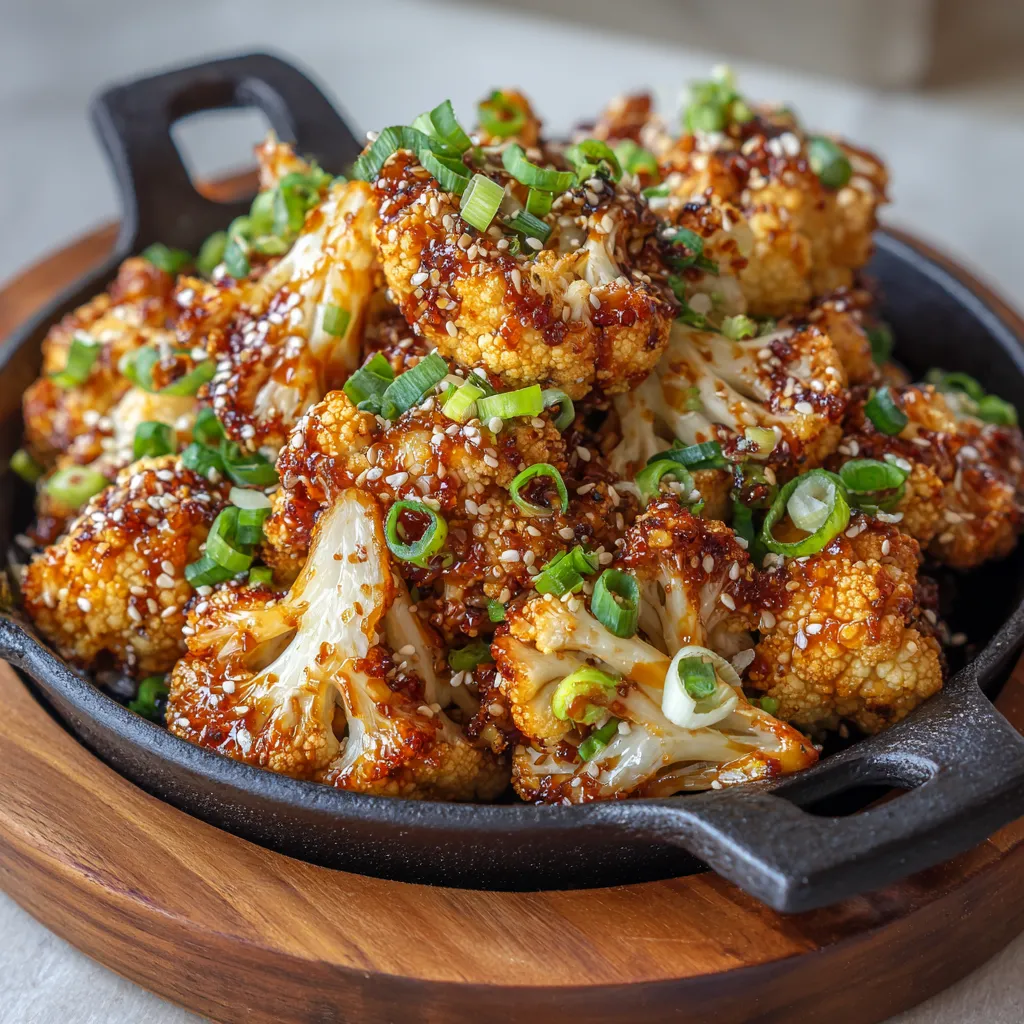 Save to Pinterest
Save to Pinterest Korean baked cauliflower delivers everything I crave in a weeknight veggie dish—roasty edges, bold spicy-sweet flavor, all with hardly any cleanup. The gochujang glaze packs umami and just enough heat, perfect for when I want to shake up my regular vegetable routine.
I made this for friends during a cozy movie night and no one missed the meat. My youngest declared it better than takeout.
Ingredients
- Cauliflower: a fresh large head brings firm texture and mild flavor that soaks up the sauce
- Olive oil: helps crisp up the florets without frying
- Kosher or flaky salt: brings out natural sweetness in the cauliflower
- Black pepper: brightens the earthy notes in the veg
- Gochujang: Korean chili paste gives the dish its signature heat and complexity Look for one where chili is one of the first ingredients
- Soy sauce: balances salt and umami Opt for a high quality one or tamari for gluten free
- Sesame oil: adds toasty depth Choose toasted sesame oil for the richest aroma
- Honey or maple syrup: creates that classic Korean sweet stickiness Both work so use your favorite
- Rice vinegar: brings gentle punch Choose unseasoned for cleanest taste
- Garlic: skip prechopped and mince fresh for a stronger zap
- Fresh ginger: adds warmth and zing Go for organic if you can
- Toasted sesame seeds: for final crunch Buy pre-toasted or toast them yourself on low heat
- Green onions: freshen the whole plate Spring onions work too in a pinch
Step-by-Step Instructions
- Prep the Oven and Cauliflower:
- Set your oven to 400 degrees F for a proper roast. Break your cauliflower into bite-sized florets and place them in a big bowl. Toss well with olive oil salt and pepper so every piece gets coated for even roasting.
- Roast the Cauliflower:
- Spread the florets in a single even layer on a baking sheet. Pop into the hot oven. Roast for 25 to 30 minutes flipping the florets once halfway through. Wait for crispy golden brown edges before moving on.
- Make the Sauce:
- In a bowl whisk together the gochujang soy sauce sesame oil honey rice vinegar garlic and ginger until completely blended. The smell alone should get your mouth watering.
- Thicken the Sauce:
- Pour the sauce into a small saucepan. Heat on medium while whisking gently for about three to five minutes. You want it just a bit thicker but still very pourable.
- Glaze and Finish the Bake:
- Remove the crispy roasted cauliflower from the oven. Drizzle or brush the thickened sauce over the florets and toss until everything is glossy. For extra caramelized edges bake for another five minutes.
- Garnish and Serve:
- Pile hot cauliflower into a serving bowl or plate and scatter with toasted sesame seeds and plenty of sliced green onions. Serve right away alone or with rice or noodles if you like.
 Save to Pinterest
Save to Pinterest My favorite ingredient in this recipe has to be the gochujang. I still remember the first time I opened a new tub and the scent hit me—spicy sweet and so unique. Now there is always a jar in my fridge waiting for recipes like this one. This dish has made even picky eaters in my family love vegetables.
Storage Tips
Store leftover Korean baked cauliflower in an airtight container in the fridge. It keeps well for two to three days. If you want to crisp it up again simply roast on a baking sheet at 375 degrees for five to eight minutes.
Ingredient Substitutions
Try broccoli florets if you do not have cauliflower or a mix of both for extra color. Maple syrup swaps perfectly for honey making the recipe vegan. For extra crunch sprinkle chopped peanuts or cashews before serving.
 Save to Pinterest
Save to Pinterest Serving Suggestions
Serve the cauliflower on its own as an appetizer or side. For a hearty main dish just spoon it over steamed rice or soba noodles and add extra green onions. I even like piling it into lettuce wraps for a fresh and spicy snack.
Cultural and Flavor Context
This dish brings classic Korean flavors with a healthy twist modeled after Korean fried chicken. Gochujang paste is the real star—a staple in almost every Korean home. Baking instead of frying makes it approachable for every kitchen.
Common Recipe Questions
- → Can I make this cauliflower dish gluten-free?
Yes, simply use tamari instead of regular soy sauce for a gluten-free version of the sauce.
- → What is gochujang and can I substitute it?
Gochujang is a Korean red chili paste with spicy, savory, and slightly sweet flavors. Sriracha or chili garlic sauce can be used as alternatives, though flavors will differ.
- → How can I ensure the cauliflower stays crispy?
Spread the florets in a single layer on the baking sheet and avoid overcrowding. Flip halfway through roasting for even crispness.
- → Is this dish served best as a side or main?
It works well as both—a flavorful side, appetizer, or a main when paired with rice or noodles.
- → What garnishes add the best finishing touch?
Toasted sesame seeds and sliced green onions provide delicious flavor and a beautiful presentation.